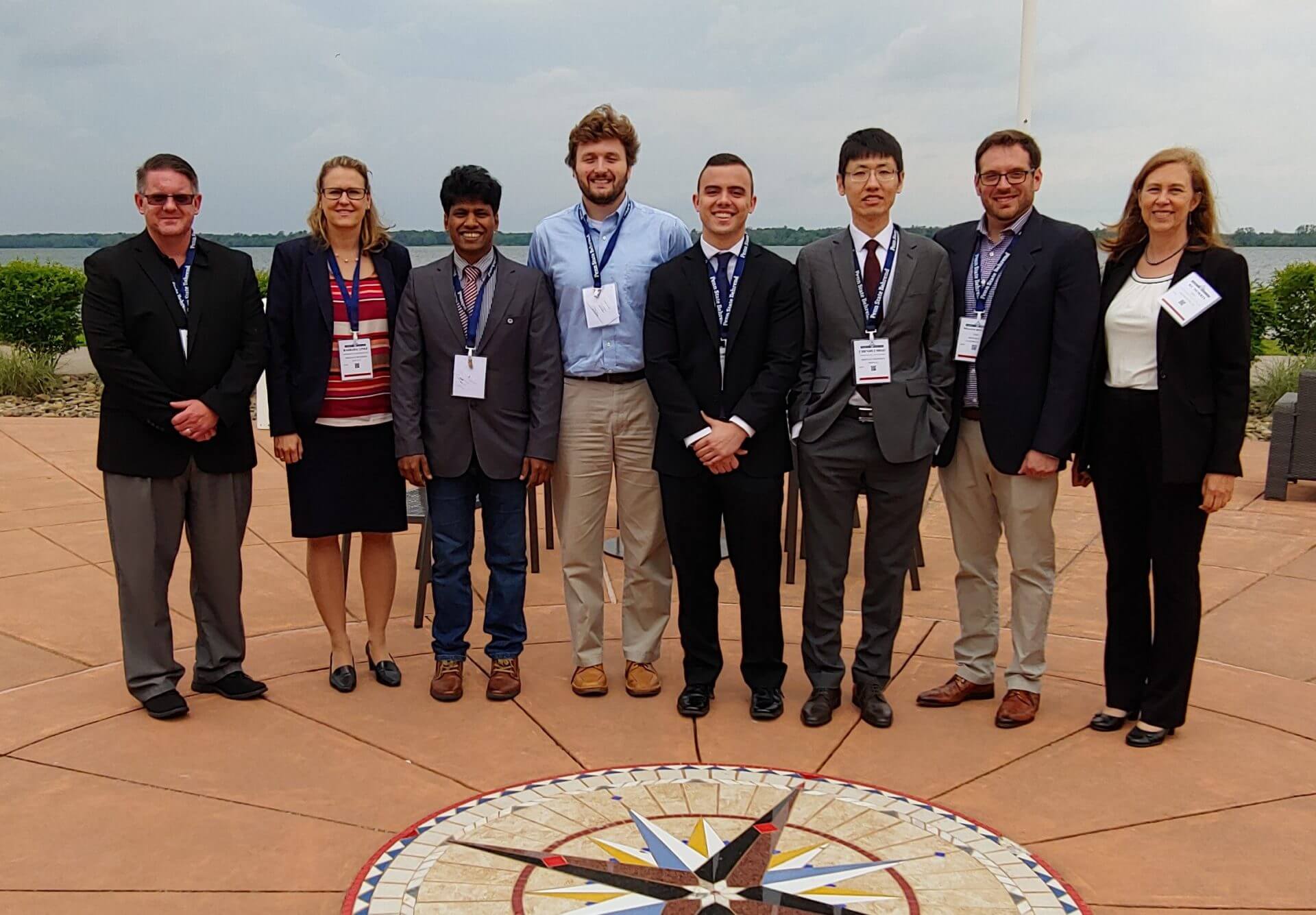
Nathan Decker (fifth from left) with judges and fellow finalists in the RAMP competition.
PhD student in the Daniel J. Epstein Department of Industrial and Systems Engineering, Nathan Decker, has won the 2019 Reusable Abstractions of Manufacturing Processes Competition at this year’s Manufacturing Science and Engineering Conference (MSEC).
The conference, supported by the Manufacturing Engineering Division of the American Society of Mechanical Engineers, was hosted at Penn State Behrend from June 10 – June 14 2019.
The RAMP competition, presented by the National Institute of Standards and Technology, aims to promote the characterization of manufacturing processes – leading to a common set of models and metrics. The theme of the 2019 contest was Model Reusability.
Decker presented his winning project, titled Reuse of a UMP Model for Geometric Accuracy Prediction Across Multiple Additive Manufacturing Processes.
Decker said that in manufacturing, you will always find that an object’s shape is slightly different than that of the theoretical object you designed.
“Most of the time, these differences are small and insignificant. In some situations, however, the extent of these deviations can be large enough to render an object useless for its intended application,” Decker said.
Decker said that this happens more frequently during 3D printing than traditional methods of manufacturing, hampering more widespread adoption of 3D printing.
Decker said that he and his advisor, Associate Professor of Industrial and Systems Engineering Qiang Huang developed a reusable framework for predicting the geometric errors of a 3D printed part before it is produced. A framework that can also be applied to methods of additive manufacturing.
“It uses machine learning to let a computer learn from past mistakes that a printer has made in order to predict a part’s manufacturing errors before it is printed. Someone in industry could use this tool to reduce wasted time and money from failed prints, and improve the quality of successful prints,” Decker said.
Published on June 19th, 2019
Last updated on April 8th, 2021

